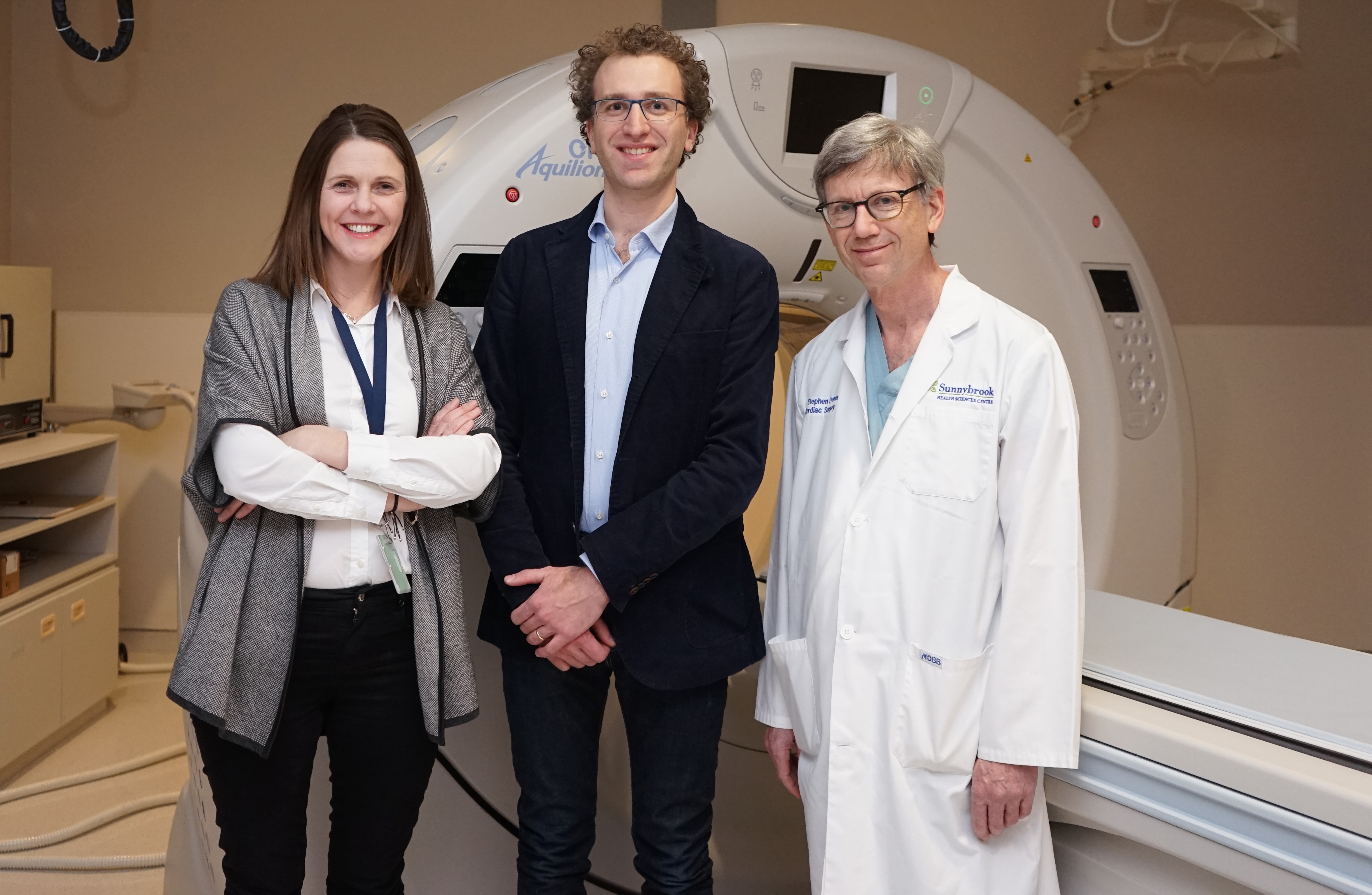
February 8, 2018
The heart is complex and mysterious, but an ECE-led research team aims to increase our understanding of it using math.
Coronary artery disease — the buildup of plaque in the heart’s arteries — is the second leading cause of death in Canada. Physicians will often graft an artery or a vein from elsewhere in the patient’s body to bypass the blocked artery. Unfortunately, the complex behaviour of the cardiovascular system makes it difficult to predict the success rate of a graft — up to 30 per cent fail within a year following surgery.
Now, Professor Piero Triverio in The Edward S. Rogers Sr. Department of Electrical & Computer Engineering (ECE) is collaborating with both physicians and mathematicians to explore how computer simulations can help to identify why grafts fail, and improve treatment procedures.
Currently, surgeons rely on information from CT scans to decide when and how to perform graft surgery, but these anatomical scans include little information on a patient’s unique physiology, such as blood velocity and pressure.

“We want to use the information from traditional medical imaging to set up computational simulations that can provide an unprecedented amount of information on blood flow in individual patients, and relate this information to graft failure,” says Triverio. “This study could help to identify under which scenarios graft surgery is more likely to succeed or fail.”
To do this, Triverio is collaborating with Dr. Stephen Fremes, a cardiothoracic surgeon at Sunnybrook Health Sciences Centre; Dr. Laura Jiménez-Juan, a cardiothoracic radiologist at Sunnybrook Health Sciences Centre and Professor Gianluigi Rozza, a Professor of Numerical Analysis and Scientific Computing at the International School for Advanced Studies (SISSA).
In December 2017, the first patients participating in the study received a CT and MRI scan one month after their graft surgery. The team will combine the anatomy of the patient’s vessels obtained from the medical images with Navier-Stokes equations, which describe the behaviour of fluids, to develop comprehensive simulation models for coronary arteries. One year after surgery, researchers will know whether graft surgery has been successful, and will study the correlation between simulation results and graft failure.
“The complexities of the heart are immense; currently we are able to access only small pieces of information in a very large puzzle,” says Dr. Stephen Fremes of Sunnybrook Health Sciences Centre. “If we can develop models that predict how blood flows in the coronary arteries of an individual patient, we can tailor bypass surgery for each patient more accurately — the more information we have, the better decisions we can make for a patient.”
“The idea is that if a surgeon had access to the parameters which influence the success of graft surgery, they could use this information to determine the best course of action for each individual patient,” says Triverio. “Longer term, the vision is that a simulator could help surgeons to investigate hypothetical surgical plans, and choose the best suited for a given individual before the patient goes under the knife.”
Professor Triverio’s group has done similar modelling on other cardiovascular diseases, such as aortic coarctation
Simulations and modelling are common tools for electrical and computer engineers: the complex nature of an integrated circuit combined with the cost of prototyping means that electronic designers routinely use simulations and models to predict how these complex systems will function once manufactured. Triverio’s previous research has focused on the computational modelling of electromagnetic fields in integrated circuits, and antennas.
“Electromagnetic waves and blood flow are completely different phenomena, but their mathematical models are more similar than you might think,” says Triverio. “This gives us an exciting opportunity to apply these engineering techniques to advance healthcare, and improve the lives of people diagnosed with cardiovascular disease.”
More information:
Jessica MacInnis
Senior Communications Officer
The Edward S. Rogers Sr. Department of Electrical & Computer Engineering
416-978-7997; jessica.macinnis@utoronto.ca